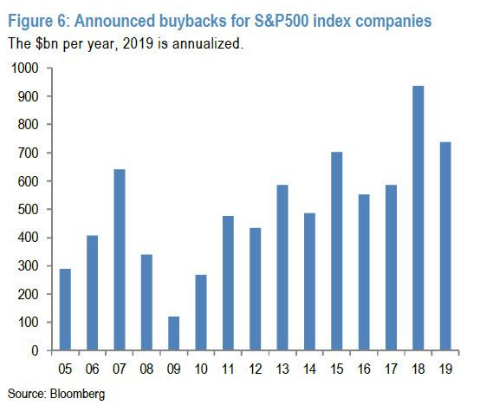On February 27, 2018, Macy’s reported its Q4 2017 and FY17 results. With some retailers and especially Macy’s, following the numbers for the 4th quarter can be cumbersome, as they had offered holiday sales guidance updates previously. On January 4, 2018, Macy’s offered its November and December 2017 sales in a press release as follows:
“Comparable sales on an owned basis increased 1.0 percent in the months of November and December 2017 combined, compared to the same period last year. On an owned plus licensed basis, comparable sales increased 1.1 percent in the combined November/December period.”
The following bullet points serve to outline Q4 and FY17 results:
- $8.666 billion, an increase of 1.8 percent, compared with sales of $8.515 billion in the fourth quarter of 2016.
- Comparable sales on an owned basis were up 1.3 percent in the fourth quarter and up 1.4 percent on an owned plus licensed basis. Total sales in the fourth quarter of 2017 reflect a 14th week of sales, whereas comparable sales are on the same 13-week basis as fiscal 2016.
- Sales in fiscal 2017 totaled $24.837 billion, down 3.7 percent from total sales of $25.778 billion in fiscal 2016. Comparable sales on an owned basis declined 2.2% in fiscal 2017. Comparable sales on an owned, plus licensed basis declined by 1.9% in fiscal 2017. This result beat the original forecast for owned, plus licensed comp sales of minus 3 percent.
- Macy’s sales have declined for more than 3 years to date.
- Credit income in the quarter was $244 million, up $36 million over last year. This was due to higher credit sales due, in part, to the extra week in January, as well as continued good profitability of the program. For the full year, credit income was $768 million, or $32 million above last year.
- Credit penetration was 46.2% for the quarter and for the year, 90 basis points below last year in both time periods.
- $368 million of gains associated with real estate transactions in the fourth quarter. This includes $234 million for the Union Square Men’s building, $21 million related to Brooklyn and $113 million associated with other transactions. And for the full year, a total of $544 million in real estate gains.
- Units per transaction were down 1.6% in the fourth quarter.
- Gross margin in the quarter was 38.2%, down 10 basis points versus last year and better than original guidance for the quarter.
- Ended the year with inventory 3.5% below last year on a comp basis.
In order to get a clear vision of the retailer’s earnings results, we are separating them from the other metrics within and as follows: Earnings per share on a diluted basis for Q4 2017 was $4.31. For comparability to guidance and to prior years, we would back out the following two items: One, a $1.86 benefit from the remeasurement of deferred taxes due to federal tax reform; and two, $0.37 of after-tax impact of the settlement charges, restructurings, impairment store closing and other costs. Net of these two items, earnings per share in the fourth quarter was $2.82 versus $2.02 last year. Remember, included in the fourth quarter is the $0.48 per share gain associated with the sale of the Men’s building on Union Square. Excluding that gain, earnings per share increased 16% over last year. Moreover, the earnings per share for FY17, excluding the deferred tax adjustment as well as the restructuring, impairments, store closing costs, pension settlement and debt premium cost, was $3.77 or 21% above 2016 results.
There remain a lot of moving parts with regards to the Macy’s retail, cost cutting and real estate monetization operations. Most importantly remain the retail operations of the company and as sales continue to decline YOY, even as earnings rose handsomely in 2017. It is keenly important to consider how those earnings were achieved. Much of the earnings growth can be attributed to the closing of some 81 stores over the last 2 years and dropping unprofitable, burdensome stores. Secondly and alongside these store closures is the subsequent inventory reduction and curtailment of logistic operations that accompany such inventory movement through the sales channels. The 3.5% reduction in inventory for Macy’s is quite significant in terms of costs, but this tailwind may not have much more wind to blow into the earnings picture going forward. Again, Macy’s has closed 81 total stores out of the announced 100 store closings it had originally planned. At this point and going forward, inventory reductions will likely be minimized in favor of in-stocks and unprofitable stores to close are presently fewer than 20% of the former weighting.
In contrast to the pessimistic potential for inventory characterized, one aspect of inventory reduction that can be carried forward, in the first half of 2018, is less carryover inventory of last season’s goods. That gives Macy’s the opportunity to respond to what’s working in-season, be that a hot vendor or a hot trend.
Macy’s has an uphill battle under its CEO Jeffrey Gennette who has been with the company for over 30 years now. The ever shifting retail landscape that centers on a seismic shift from brick & mortar shopping toward digital/online shopping does not favor Macy’s or its peers long-term and has found traditional retailers scrambling to balance their business operations. Most department store retailers have built out their online presence over the last several years and now offer competitive omni-channel shopping experiences. Even with several years of double-digit online sales growth, Macy’s online sales represent less than 15% of Macy’s total sales. Moreover, online sales weigh down gross margin performance year after year.
In terms of improving foot traffic in stores that would likely lead to increased sales, Macy’s has outlined some of the many sales initiatives it continues to implement. Keep in mind most of these initiatives will not take hold across the total chain store until late 2018. Macy’s sales initiatives fall under the retailer’s aptly named North Star strategy and include Backstage, loyalty rewards program, branding and marketing, Market @ Macy’s concept and cost cutting.
The sales initiatives in place are not altogether unique to Macy’s. All retailers are forced to focus on customer service, loyalty rewards, product assortment that includes exclusivity of merchandise, brand marketing and innovation. One sales initiative that is not denoted in Macy’s North Star program that may be of great benefit is the company’s new employee incentive program. This incentive program will reward employees at the store and retail sales operations level for achieving specific sales goals on a monthly and annual basis. While many of the retailer’s initiatives are not new or unique to Macy’s, even the slightest bump off of relatively low levels can seem like a major leap for a retailer who has seen consistent sales declines. This is no more apparent than in the company’s minimal YOY sales improvement that found its share price bottoming in Q3 2017 around $17 a share and now, with a positive comp sale reported in Q4 2017, is around $30 a share. The laws of small numbers are at work in favor of Macy’s presently and may continue through the first quarter of 2018.
With the North Star strategy in place last year and through the fourth quarter of 2017, the number of transactions was flat to the prior year in the fourth quarter on a comp basis. But this also represented an improvement sequentially or from a 7% drop experienced in the third quarter of 2017. So while the North Star strategy is showing its affects on foot traffic, more may be to come as the company broadens the reach of North Star in 2018. Now let’s take a look at the retailer’s guidance for 2018. We’ll start with the all-important comp sales metric.
- Comp sales on an owned plus licensed basis are assumed to be flat to plus 1 percent. Macy’s expects the back half of the year to be stronger than the first half due to the fully deployed sales initiatives across the chain.
- Macy’s expects the first quarter sales to benefit from a partial shift in the timing of the annual Friends & Family event from the second quarter into the first.
- Comp owned plus licensed sales for the first half of the year are assumed to be approximately flat to down slightly.
- Total sales for the year are assumed to be down 0.5% to down 2%. Remember, the company will be closing 11 stores in Q1 and possibly a total of 19 stores in 2018.
- Gross margin on retail sales is expected to be flat to up slightly, as compared to the 39.1% in 2017.
- Asset sales of $340 million to $370 million in cash proceeds and $300 million to $325 million in book gains for 2018. This does assume the successful sale of the I. Magnin building in this year, which represents a very significant portion of the guidance for both cash and the gains.
- The current analysts’ median estimate for 2018 earnings per share is $3.52, but may be updated in the coming weeks given the recent results and 2018 guidance offered by management.
- 2018 earnings per share to be $3.55 to $3.75.
One of the biggest reasons earnings are expected to decline in 2018 versus the previous year is due to a reduced expectation in real estate monetization. Included in Macy’s guidance is $300 million to $325 million for asset sale gains as compared to $544 million last year. So excluding asset sale gains, earnings per share would be expected to grow in 2018.
While Macy’s continues to combat the forces of Amazon, online sales consumption trends and the general discounting found amongst many retailers, the retailer carries forward with it an improving balance sheet. Additionally, the company is rewarding investors with a healthy 5.5% dividend yield and share repurchase program. Helping Macy’s pay down debt, buyback shares and pay this healthy dividend quarterly is the company’s improved free cash flow performance.
It’s important to denote, that the substantial drop in free cash flow from 2014-2015 came with substantial sales declines. The main reason for the turnaround in free cash flow, as evidenced in the period from 2016-2017, is the operation of monetizing assets and cost cutting measures. We can logically draw this conclusion as sales have continued to erode.
Macy’s share price can be perceived as undervalued when compared to its peers, which boast a multiple significantly higher. Macy’s currently trades at less than a 10 price-to-earnings multiple. Even when considering its more broadly utilized price-to-sales multiple of .35, the share price is notably undervalued on a historical basis. Having said that, the reasons for the valuation have been justified in the constancy of declining sales. Keep in mind, Macy’s has forecasted sales to decline further in 2018. It remains to be seen if Macy’s can beat its guidance and Q1 2018 results. This would likely go a long way to either improving upon or justifying the current valuation.
Tags: M









